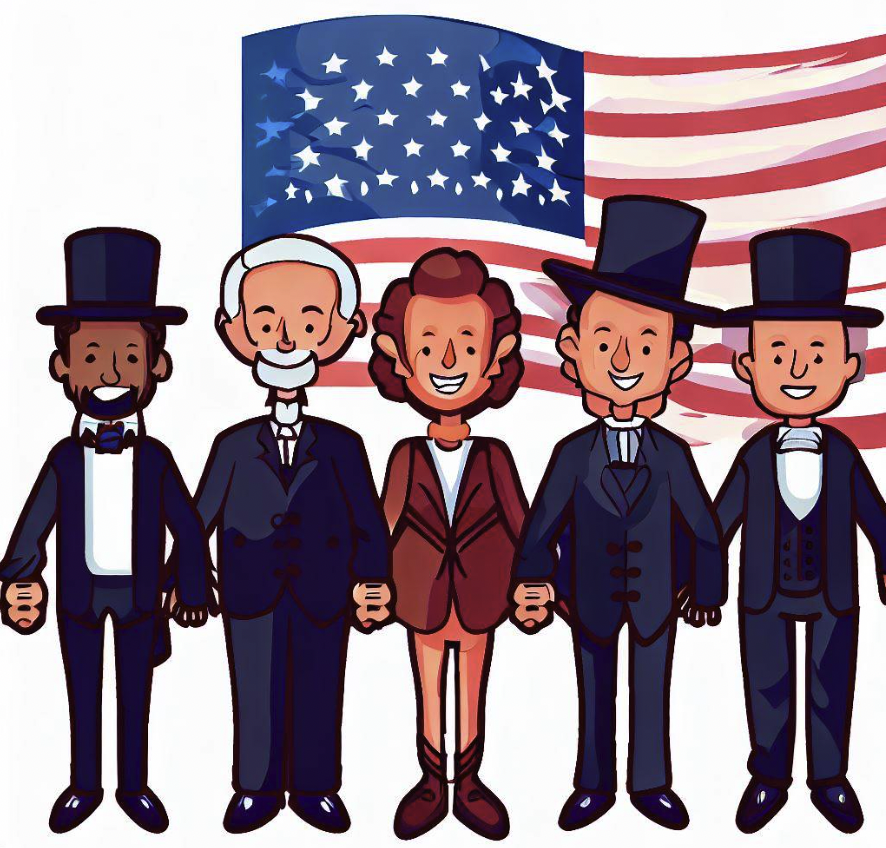The president of the United States is often considered the most powerful person in the world, leading the world’s largest economy and military.
However, despite their prominence, there is a considerable debate about the extent to which U.S. presidents are involved in policymaking.
Are they merely figureheads, high-level directors, or do they have a high level of involvement in the process?
This article delves into the various roles presidents have played in policymaking throughout history, with a focus on the United States.
Table of Contents
The President as a Figurehead
The term “figurehead” refers to a leader who holds a position of authority but has limited power in actual decision-making.
In the context of US presidents, some may argue that they are figureheads due to the separation of powers and the fact that they rely on the expertise of their advisors and other government officials.
However, it is important to note that the president does have considerable influence over policymaking through their authority to sign or veto legislation, appoint key officials, and their role as the commander-in-chief of the armed forces.
While some presidents have been more passive in their approach to policymaking, it is generally inaccurate to label them as mere figureheads.
The President as a High-Level Director
Many US presidents can be characterized as high-level directors, setting the overall policy agenda and vision for the nation.
In this role, presidents outline their priorities, often through their State of the Union address or policy speeches, and then work with their advisors and Congress to turn their vision into legislation.
Presidents like Franklin D. Roosevelt, Lyndon B. Johnson, and Barack Obama have all taken on this director role, using their influence to push for major policy changes like the New Deal, the Great Society, and the Affordable Care Act, respectively.
While they may not be involved in every detail of policymaking (nor have the expertise to do so), they set the tone and direction for their administration.

The President as Highly Involved in Policymaking
Some presidents have been highly involved in policymaking, taking an active role in the development and implementation of policies.
This approach often requires a deep understanding of the issues and a willingness to engage with stakeholders and negotiate compromises.
For example, President Woodrow Wilson was heavily involved in the creation of the League of Nations, an international organization designed to prevent future wars.
Similarly, President Bill Clinton was known for his hands-on approach to policy, working closely with his team to craft legislation and build consensus in Congress.
How Does a President’s Policy Priorities Change Between the First Term and Second Term?
A president’s policy priorities can change between their first and second terms due to various factors, including electoral considerations, evolving political landscapes, and lessons learned from the first term.
Here are some key reasons behind such shifts in priorities:
Electoral Considerations
During their first term, presidents often focus on policy priorities that appeal to their electoral base and are more likely to be politically popular.
This focus helps them build support for re-election. However, once re-elected, presidents no longer face re-election pressures, and this can lead them to pursue more ambitious or controversial policy goals during their second term.
Evolving Political Landscape
The political landscape may change between a president’s first and second terms.
Factors such as shifts in public opinion, changes in party control of Congress, or unforeseen events (such as economic crises or international conflicts) can influence a president’s policy priorities.
As a result, a president may need to adjust their agenda to address new challenges or capitalize on emerging opportunities.
Lessons Learned
Presidents often learn valuable lessons during their first term, gaining a better understanding of the policymaking process, their own leadership style, and the constraints imposed by the political system.
These insights can lead to shifts in policy priorities as the president refines their approach to governance and focuses on areas where they believe they can be most effective.
Building a Legacy
In their second term, presidents become more concerned with shaping their legacy.
This focus can lead them to prioritize policies that they believe will have a lasting impact and define their presidency.
As a result, second-term presidents may concentrate on long-term or transformative policy initiatives, even if they are politically challenging.
Lame-Duck Status
As their second term progresses, presidents may face increasing challenges in advancing their policy agenda due to their lame-duck status.
As the end of their presidency approaches, political opponents may be more inclined to wait for the next administration before taking action on major policy initiatives.
This dynamic can limit a president’s ability to pursue their policy priorities and may lead them to focus on executive actions or foreign policy, where they have greater authority and flexibility.
In summary, a president’s policy priorities can change between their first and second terms for various reasons, such as electoral considerations, evolving political landscapes, lessons learned, legacy-building, and lame-duck status.
These factors contribute to shaping the president’s agenda and influence their ability to effectively pursue policy goals.

Why do people think a president will “fix the country” and are their expectations reasonable?
The belief that a president will “fix the country” stems from various factors:
- Symbolic Leadership: The president is often seen as the face of the nation, symbolizing unity, direction, and purpose.
- Campaign Promises: Candidates often make promises to address pressing issues, leading voters to believe they have solutions.
- Desire for Change: People often look for leaders who can bring about positive change, especially if they’re dissatisfied with the current state of affairs.
- Media Influence: Media can amplify the perceived capabilities and intentions of a presidential candidate.
- Historical Precedents: Past presidents who have enacted significant positive change can set expectations for future leaders.
- Simplification of Complex Issues: It’s easier to believe that one person or entity can solve complex problems than to grapple with the intricacies of those issues.
Are these expectations reasonable?
- Limited Power: The president is part of a system of checks and balances and can’t make changes unilaterally.
- Complex Issues: Many problems are deeply rooted and multifaceted, requiring more than one term or even one presidency to address.
- External Factors: Global events, natural disasters, and other unforeseen circumstances can affect a president’s ability to deliver on promises.
- Political Climate: A divided political environment can hinder the implementation of policies.
While it’s natural for people to pin hopes on a leader, it’s essential to have tempered expectations given the complexities and constraints of the role.
What a President Says vs. Reality
(This is an excerpt from Public Policy Step by Step, used with permission.)
The public statements policymakers make often differ significantly from the reality of how policy decisions are made behind the scenes. These differences stem from several factors, including political strategy, the need to simplify complex issues for public consumption, and the influence of stakeholders and institutional constraints that are not always visible to the general public.
One of the main reasons for this divergence is that public statements are often designed for messaging, not for nuanced policy discussions. Policymakers must communicate their decisions to the public in ways that are easily understood and resonate emotionally with voters. This means simplifying complex issues, using soundbites, and framing policies in ways that appeal to specific constituencies. For example, a politician might publicly claim that a new healthcare policy will “reduce costs and improve care for everyone,” even if the actual policy contains trade-offs, like cutting services for certain groups to finance improvements for others. The public message focuses on the most politically advantageous aspects of the policy, rather than the full complexity of the decision-making process.
In contrast, the in-house reality of policy development is much more complicated. Policymakers must navigate a web of competing interests, technical constraints, and limited resources. Policy decisions are rarely black-and-white; they often involve difficult compromises and balancing different priorities. For instance, in developing a new environmental regulation, a policymaker might have to weigh the economic impact on industries against the need to reduce pollution. These trade-offs or second-order consequences are rarely discussed in public because they can create political liabilities. If a politician acknowledges that a policy will harm certain groups, they risk losing support from those voters or facing backlash from powerful interest groups.
Another factor contributing to the gap between public statements and in-house reality is the role of stakeholders. Behind closed doors, policy decisions are heavily influenced by interest groups, lobbyists, bureaucrats, and political advisors. These stakeholders bring their own agendas and priorities to the table, which can shape the final outcome in ways that aren’t immediately visible to the public. For example, in the development of tax policy, corporate lobbyists may push for specific provisions that benefit their industries, even if the public messaging around the policy focuses on broad platitudes––e.g., helping middle-class families. The influence of these stakeholders is often downplayed or ignored in public statements, which present the policy as being in the best interest of the general public.
The bureaucratic process itself also creates a gap between public statements and in-house reality. Policy development within government agencies involves technical analysis, regulatory constraints, and legal considerations that aren’t always visible to the public. A policy that sounds straightforward in a press release might involve years of negotiation, legal review, and regulatory hurdles before it can be implemented. For example, a public statement might announce a new infrastructure initiative as a quick solution to economic recovery, but the reality might involve complex land use issues, environmental reviews, and coordination with multiple levels of government, all of which delay the project significantly. The in-house reality reflects these complexities, while the public statement simplifies them to create the impression of decisive action.
Timelines are another area where public statements often differ from in-house reality. Policymakers may publicly promise quick results to show that they are taking action, but behind the scenes, they know that the policy will take years to fully implement. This is common in areas like healthcare reform or climate policy, where the effects of a new law or regulation may not be felt for a decade or more. Public statements create the expectation of immediate benefits, even when policymakers are aware that the actual process will be much slower and more incremental.
There is also a difference in the way risk and uncertainty are communicated. In public, policymakers often downplay the risks or uncertainties associated with a policy to avoid creating fear or opposition. For instance, during a financial crisis, a government might publicly reassure citizens that a new economic policy will stabilize the economy, even if, behind closed doors, policymakers acknowledge that the outcome is uncertain and depends on factors beyond their control, such as global markets or unforeseen economic shocks. The public narrative focuses on certainty and confidence, while the in-house discussions are more candid about the challenges and risks involved.
The role of data and evidence in policy decisions is another area where public statements can differ from reality. While policymakers often emphasize that their decisions are “evidence-based,” in practice, data is just one of many factors considered. Political considerations, public opinion, and the need to satisfy key stakeholders can all weigh more heavily than empirical evidence in the final decision. For example, a government might introduce a crime policy that is popular with voters but not supported by research, where in-house reality acknowledges that the decision was driven more by political strategy than by evidence.
FAQ Section for “The Role of U.S. Presidents in Policymaking: Figurehead, Director, or Highly Involved?”
Q: How does the U.S. Constitution define the president’s role in policymaking?
A: The U.S. Constitution does not specifically outline the president’s role in policymaking.
However, it grants the president certain powers, such as signing or vetoing legislation, appointing key officials, and serving as the commander-in-chief, which indirectly influence the policymaking process.
The president’s role in policymaking has evolved over time, often shaped by the individual leadership style of each president.
Q: Can a president’s involvement in policymaking change throughout their term?
A: Yes, a president’s involvement in policymaking can change throughout their term in office.
Factors such as shifting political landscapes, a president’s evolving policy priorities, or changes in their administration’s personnel may influence the extent of their involvement in policymaking.
Q: Which branch of government has the most influence over policymaking?
A: Policymaking in the United States is a collaborative process involving all three branches of government – the executive, legislative, and judicial branches.
The extent of influence that each branch has on policymaking can vary depending on the issue at hand and the political dynamics at play.
While the president often sets the policy agenda, Congress plays a crucial role in crafting and passing legislation, and the judiciary can interpret and uphold or strike down laws.
Q: How do the president’s advisors and staff impact their involvement in policymaking?
A: The president’s advisors and staff, such as the Cabinet, National Security Council, and other policy experts, play a significant role in shaping the administration’s policy direction.
They provide the president with information, analysis, and recommendations on a wide range of issues, which can influence the president’s decisions and involvement in policymaking.
Q: How do external factors, like public opinion or international events, affect the president’s involvement in policymaking?
A: External factors like public opinion and international events can have a significant impact on the president’s involvement in policymaking.
Public opinion may pressure the president to prioritize certain issues or adopt specific policy positions, while international events can prompt the president to take immediate action or reevaluate their policy priorities.
Q: Can a president’s personal ideology or beliefs significantly impact their involvement in policymaking?
A: A president’s personal ideology or beliefs can play a significant role in shaping their policy priorities and level of involvement in policymaking.
Presidents with strong convictions on certain issues may be more likely to take a hands-on approach, working to craft and promote policies that align with their beliefs.
Q: How does the relationship between the president and Congress affect the policymaking process?
A: The relationship between the president and Congress plays a critical role in the policymaking process.
A cooperative relationship can lead to more effective policymaking, as the two branches work together to develop and pass legislation.
Conversely, a contentious relationship may result in gridlock, making it more difficult for the president to advance their policy agenda.
Conclusion
The extent of a president’s involvement in policymaking varies depending on their individual leadership style, policy priorities, and the political climate.
While some presidents may be more passive or focus on high-level direction, others may be more involved in the intricacies of policy development and negotiation to the extent of their abilities.
Though it’s not exactly like how things are portrayed in the movies, the President of the United States remains a key player in the policymaking process, influencing the nation’s direction and its future.


